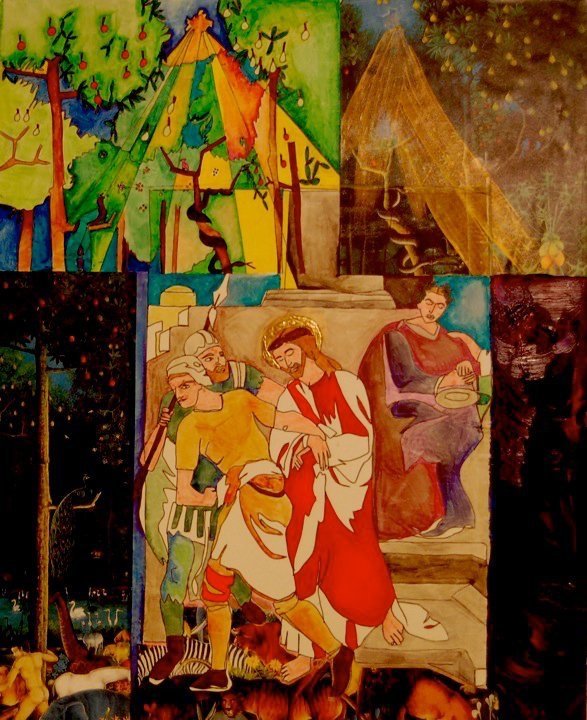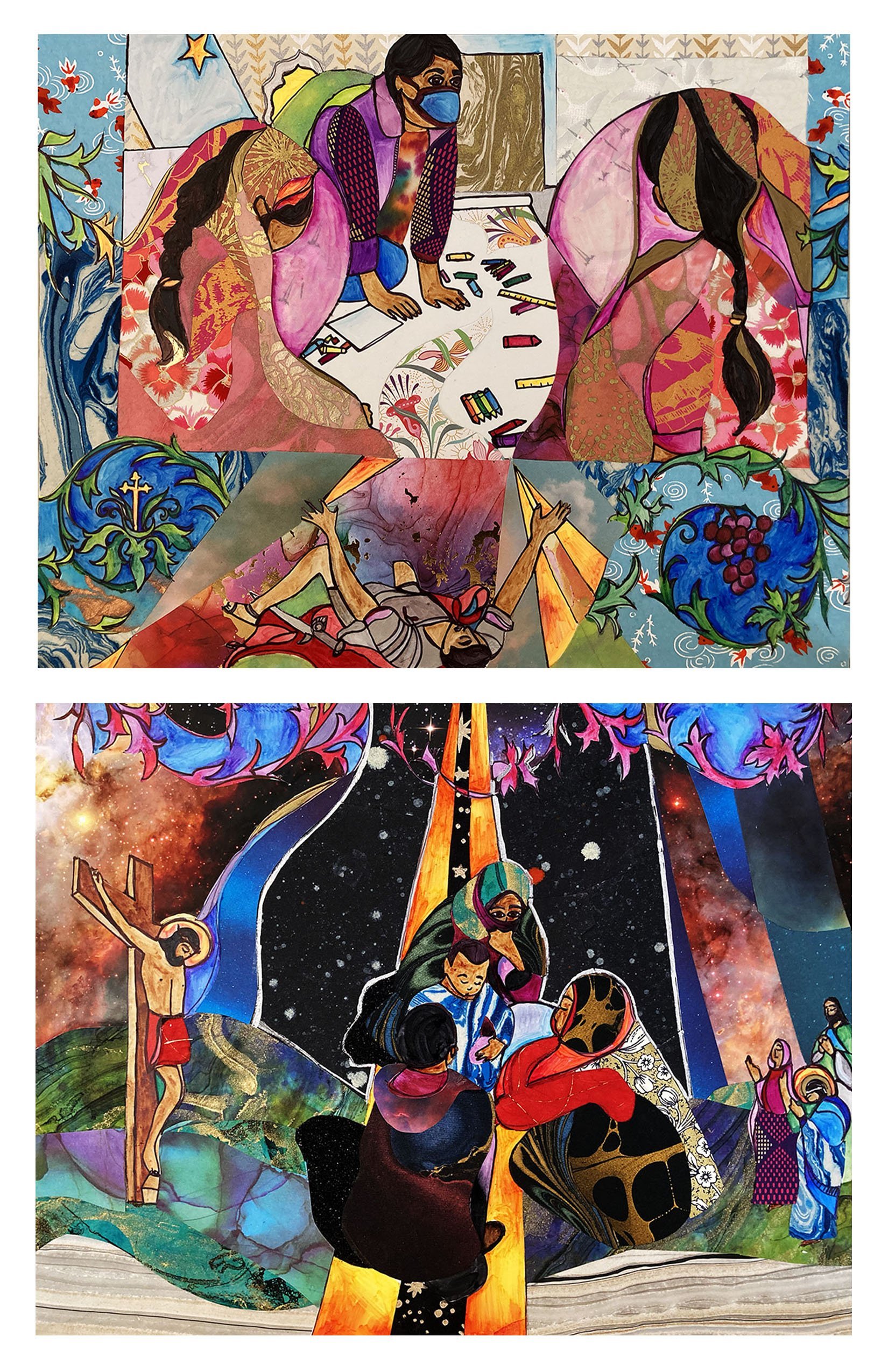Day Two
In the spirit of Lutheranism, let me begin my day two Lenten blog post with a confession: the very first Stations of the Cross I created featured a white Jesus. I feel a hot flush of embarrassment just typing that out. I made my very first Stations of the Cross series while I was still in graduate school at the Candler School of Theology at Emory University. I knew then - just as I know now - that Jesus was not a white man. But, as a young white woman, I had only ever encountered depictions of a nonwhite Jesus in Black churches. And I am now, as I was then, a member in the whitest denomination in the United States. Back then, to draw anything other than a white Jesus felt like I was appropriating something deeply sacred and intimate. Is there anything more deeply personal than the image of Jesus you carry in your heart and mind when you read Scripture?
I called the first series Stations of the Cross for Haiti. I created it in the days and weeks after the 2010 earthquake in Haiti. I was deeply aware of the tension in my own mind between my desire to create an authentic re-telling of the Passion and the reluctance I felt at creating what I worried would be a culturally appropriative depiction of Jesus. In the end, I thought that I could capture that tension by bringing the story of the death of a Haitian man in ICE custody alongside illustrations of a Renaissance-art inspired style. The fourteen paintings were displayed in the chapel at Candler and at each painting was an excerpt from Edwige Danticat’s memoir Brother, I’m Dying. The book includes an account of her uncle’s death in Immigration and Customs Enforcement custody after seeking amnesty from gang violence in Haiti.
Brother, I’m Dying by Edwige Danticat inspired my first Stations of the Cross series. I took sections of the narrative and matched them to moments in the Passion story.
At each station was a small bowl of glass tiles, participants were encouraged to hold the glass tile while they prayed for Haiti and then affix the tile to the painting. (The tiles had a sticky back to them.) All fourteen paintings were installed throughout the chapel and people walked from station to station, praying for Haiti, and adding their colored tiles to the artworks. The paintings went up during Holy Week and people prayed the stations throughout the week. On Easter Sunday, the Stations were filled with bright glass tiles.
But, in the end, at the very center of the artwork is a white Jesus. And the proliferation of depictions of white Jesus for the past few millennia is precisely why the image of Jesus so many carry in their hearts and minds is white in the first place. I haven’t made a single depiction of white Jesus since the completion of Stations of the Cross for Haiti. I was fundamentally changed by the creation of that first series which is why I keep coming back to the Stations of the Cross over and over. Every project has changed me profoundly and transformed my perspective on Jesus in big and small ways.
I’m taking a pause from creating a new Stations of the Cross series this year. For this Lenten season, I’m spending time with and reflecting on the ten series that I’ve spent more than a decade creating. For the 40 days of Lent, I’ll be sharing here some of the insights and experiences I’ve gained from living in this way with the Passion story. Here is the very first Station of the Cross artwork from my first series in 2010 to the last artwork in my most recent series from 2022.
Left: The first Station of the Cross, Jesus is Condemned by Pilate, from the 2010 Stations of the Cross for Haiti. This is the way the piece looked before it was installed and glass tiles were added to it. It was photographed in a dimly lit graduate student dorm, so it’s not the best photo.
Right: The final pairing in Stations of the Cross and Resurrection (2022). In last year’s series I paired Stations from the Cross with Stations of the Resurrection, the latter is a relatively new devotional practice drawing on Christ’s post-resurrection ministry. In this piece, Paul on the Road to Damascus is paired with Jesus Dies on the Cross. The bottom piece shows an Afghan family abandoned at the Kabul airport after the withdrawal of American military forces in Afghanistan. The image piece depicts a pair of Afghan siblings meeting art at the Philadelphia airport after being successfully evacuated from Kabul.
Stay tuned! Tomorrow I’ll be back with more art about Jesus!



